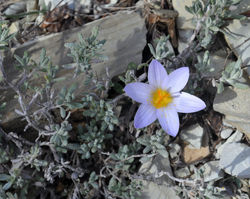+992 93 902-22-00
+998 97 928-06-02
+7 928 370-61-78

The best tours in Tajikistan and Central Asia
together with
AVANT-TOUR
Flora and fauna of Tajikistan
Nature Of Tajikistan
Mountain topography and climate diversity determine the richness and originality of the forms of vegetation in Tajikistan. There are "representatives" of North and South, West and East.
Among the plants, along with local species – saxaul, pistachio, juniper, sagebrush and Solyanka, there are Mediterranean plants-Pontic hawthorn, walnut, Fig, sycamore.
Tajikistan is one of the centers of initial distribution of such cultivated cereals as rye and wheat.
There are more than 5 thousand species of plants in the mountains and valleys. A distinctive feature of the flora is the predominance of grasses, semi-shrubs, shrubs of steppes, deserts and highlands. There are also forests, but they occupy only 4% of the territory of the Republic. Woody vegetation does not form solid massifs in the mountains of Tajikistan, but occurs in patches on the slopes of ridges, in gorges and only in places passes into real forests. Their composition varies in different parts of the Republic.
The plants of Tajikistan are well adapted to the desert and mountain conditions of existence and settle on "high-rise floors". The leaves of some desert plants are small, with needles, contribute to less evaporation, the roots are long, branched allow you to get water from the deep layers of the earth. Plants in areas with a very dry and harsh climate have a pillow-like shape. It helps them retain moisture and heat.
Tajikistan's position in the desert zone, arid climate and mountainous terrain determined the features of its soil cover. It is dominated by gray soils are the main zonal type. They got their name for the light gray color of the upper layers. These soils are formed at high temperatures on loess valleys and low foothills.
Serozems contain 0.8-4.5% humus and are rich in carbonates-a valuable food for plants. Therefore, under artificial irrigation, they produce good yields of various crops, primarily cotton.
Depending on the height of the terrain, climate and humus content, there are light, ordinary and dark gray soils. Under the influence of long-term irrigation, serozems turned into cultivated irrigation soils.
The animal world of Tajikistan is diverse. The animals that live here have adapted to the terrain and climate.
There are representatives of typical Northern animals-brown bear, hare, badger, ermine, ground squirrel, Siberian ibex.
Many Central Asian and Indo-Tibetan species are the Asian leopard, Himalayan Ular, and Tibetan wolf.
Of the Indian species of animals found here: porcupine, swallow, Oriole. From the Afghan species of animals: moufflon, Starling-Myna, Cobra, monitor lizard, mosquitoes, termites.
Natural conditions favor the development of mammals: predators, ungulates (70 species) and reptiles (46 species). There are a lot of different insects (more than 10 thousand species), more than 350 species of birds. A distinctive feature of Tajikistan is the comparative poverty of the ichthyofauna (about 40 species), which is explained by the relative youth of rivers and lakes. Some animals such as wild boar, hare, Fox, badger, mountain partridge, Indian duck have commercial significance.
Unregulated fishing has led to a sharp decline in the number of many animals. The leopard, snow leopard (snow leopard), Jeyran, and horn-horned goat (marhur) are now very rare. In order to preserve valuable and rare animals, hunting is prohibited in the Republic and reserves have been created. A lot of work is being done to enrich the animal world. In Tajikistan, the furry animal nutria is acclimated.
Ichthyologists breed trout perch in floodplain lakes, and local trout species are bred in mountain rivers.
 |  |  |  |
|---|---|---|---|
 |  |  |  |
 |  |  |  |






